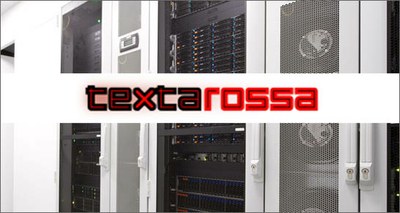Technology: EU project for Increasingly performing supercomputers gets underway
17/6/2021
 The ENEA coordinated European project TEXTAROSSA[1] to develop innovative technologies for next generation supercomputing, a sector of increasing importance to run applications in many domains like energy, climate change, medical and pharmaceutical industry, kicks off .
The ENEA coordinated European project TEXTAROSSA[1] to develop innovative technologies for next generation supercomputing, a sector of increasing importance to run applications in many domains like energy, climate change, medical and pharmaceutical industry, kicks off .
Co-funded by the European High Performance Computing (EuroHPC) Joint Undertaking, the three-year project brings together 17 institutions and companies from 5 European countries: besides ENEA, Italy participates with CINI[2], CNR, INFN, E4 Computer Engineering, In Quattro and CINECA; Germany with Fraunhofer; France with INRIA, ATOS and Université de Bordeaux; Spain with Universitat Politècnica de Catalunya and BSC; Poland with PSNC.
Selected by EuroHPC as one of the key programs to innovate and widen the efficiency and usability of High Performance Computing (HPC) systems, TEXTAROSSA aims at becoming a technological reference point in supercomputing, developing a new hardware / software calculation architecture based on latest generation processors flanked by hardware accelerators, on innovative cooling systems and consumption reduction techniques.
“TEXTAROSSA will promote European competitiveness in this strategic sector, making available hardware / software tools essential to supercomputing; moreover, it will enable the achievement of new results in sectors of great economic, social and scientific importance such as the pharmaceutical industry, artificial intelligence, climate modeling and fundamental physics", pointed out Massimo Celino, ENEA researcher at the Division “Development of Systems for Information Technology and ICT”.
ENEA will coordinate the entire project, participating in the design and testing of the two prototypes, one based on the line identified by the European Processor Initiative (EPI)[3] and the other on OpenSequana technology[4], contributing to the definition and implementation of the new computing architecture.
"Thanks to extraordinary financial and scientific resources, new supercomputing infrastructures called exascale are being created worldwide, capable of performing approximately 1 billion billion (1018) operations per second: a single machine of this type will be able to perform double the calculations of the current 100 most powerful supercomputers in Europe, ”Celino concluded.
For more information please contact:
Francesco Iannone, ENEA – Development of Systems for Information Technology and ICT, francesco.iannone@enea.it
Massimo Celino, ENEA – Development of Systems for Information Technology and ICT, massimo.celino@enea.it
Project Website: https://textarossa.eu/
TEXTAROSSA on the magazine HPCwire (Partner E4): https://www.hpcwire.com/off-the-wire/e4-to-participate-in-textarossa-to-develop-technologies-for-energy-efficient-hpc/
TEXTAROSSA on the EuroHPC website: https://eurohpc-ju.europa.eu/news/european-high-performance-computing-joint-undertaking-launched-thirteen-ri-projects-april
TEXTAROSSA on the EuroHPC social media accounts:
Twitter: https://twitter.com/EuroHPC_JU/status/1388014076828299271
LinkedIn: https://www.linkedin.com/feed/update/urn:li:activity:6793781306300932096
[1] Towards EXtreme scale Technologies and AcceleRatOrS for HW/SW Supercomputing Applications for exascale
[2] National Interuniversity Consortium for Informatics, comprising The Polytechnic University of Milan, University of Turin and University of Pisa
[3] ARM64 architecture is based on a family of microprocessors developed by the high-tech company ARM Holding. Due to their low power consumption they are widely used in electronic systems where final applications are required to be highly specialized.
[4] Developed by ATOS BULL (one of the project partners) is a technology based on a new range of exascale, low consumption, heterogeneous, flexible computers.
